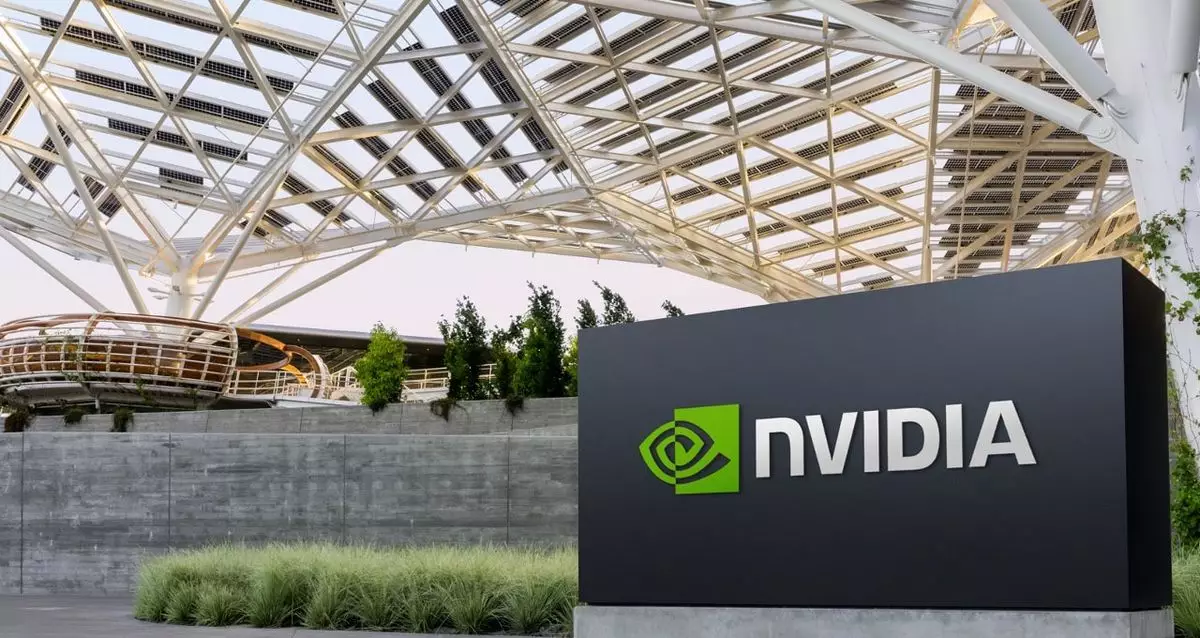When President Donald Trump declared the implementation of tariffs on goods not manufactured in the United States, a wave of uncertainty swept over the tech industry. This announcement particularly rattled Nvidia, a sprawling tech behemoth that thrives on high demand for its graphics processing units (GPUs). Following the announcement, Nvidia’s stock experienced a startling decline, plummeting up to 12% within a week—signifying a broader concern that transcends just this one company. Investors and analysts are bracing for a monumental shift that could alter the landscape of technology in the U.S. and beyond.
In the wake of Trump’s tariff proclamation, Nvidia’s market capitalization suffered a significant drop, falling from over $3 trillion to approximately $2.73 trillion in a matter of days. This depletion seemingly reflects a growing anxiety regarding the firm’s future profitability, particularly given that most of its manufacturing occurs overseas, primarily in Taiwan. Such dramatic market fluctuations raise questions about investor confidence and the sustainability of tech firms that depend on global supply chains. While this stock dip might not be the final nail in Nvidia’s coffin—historically, it has endured similar bouts of volatility—the ramifications of ongoing tariffs could have far-reaching impacts on both the company and the economy as a whole.
The tariffs announced serve as a dual-edged sword. On one hand, they aim to bolster American manufacturing by coercing foreign firms to relocate their production to the U.S., thus creating jobs. On the other hand, this strategy can significantly inflate the cost of consumer goods. Nvidia, along with its competitors such as AMD, faces the harsh reality of potentially escalated costs for consumers wishing to purchase new graphics cards, gaming systems, and servers. The gaming community, already grappling with shortages, is likely to react negatively as GPU prices surge, further entrenching challenges in an already competitive market.
As industry leaders digest the potential impacts of these tariffs, prominent figures like Nvidia’s CEO Jen-Hsun Huang have previously expressed overt support for Trump’s administration. However, they may now find themselves caught between political allegiance and corporate viability. TSMC’s $100 billion investment into U.S. manufacturing is a promising step, but it is indicative of the high stakes involved in navigating the political landscape while trying to maintain a competitive edge. Despite Nvidia’s impressive revenue growth—reporting $26 billion in a single quarter due to soaring demand for data centers—the looming tariffs could turn this success into vulnerability if not managed adequately.
The tech industry is more interconnected than ever, and the consequences of these tariffs extend well past Nvidia alone. The gaming industry, encompassing millions of enthusiastic players and developers, stands at risk as costs rise. A recent statement from a leading gaming lobbying group highlighted the potential backlash, emphasizing that Trump’s tariffs “would negatively impact hundreds of millions of Americans.” As prices rise for anticipated products like Nvidia’s RTX series GPUs, gamers may find themselves at a disadvantage, ultimately stymying the growth of a pivotal segment of the economy.
While Nvidia has faced previous stock tumults, it has often rebounded with remarkable strength, suggesting a level of corporate resilience. Yet, the threat of retaliatory tariffs from Mexico, Canada, and China looms heavily—with potential counteractions by these nations serving only to escalate tensions. Industry giants like Best Buy and Target predict that it will ultimately be consumers who bear the brunt of heightened costs and limited availability of tech products. The irony of government intervention intended to protect American interests resulting in adverse outcomes for consumers is not lost on many observers.
The ongoing turmoil ushered in by these tariff policies presents an intricate challenge for Ark companies like Nvidia. With market conditions ebbing and flowing amid geopolitical strife, the real question remains: how will these turbulent times reshape the fabric of American tech innovation and consumer engagement moving forward?

